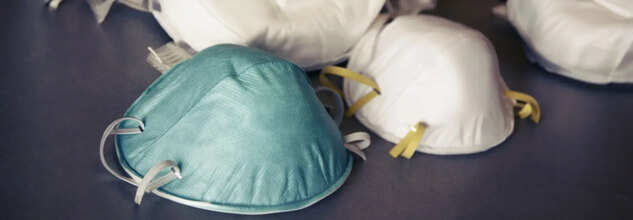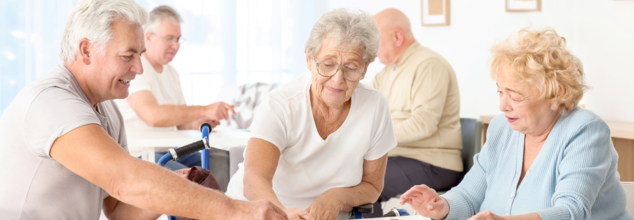- Health Conditions A-Z
- Health & Wellness
- Nutrition
- Fitness
- Health News
- Ayurveda
- Videos
- Medicine A-Z
- Parenting
- Web Stories
Delhi Pollution: What Are The Different Types Of Anti-Pollution Masks?

Anti-Pollution Masks (Credit: Canva)
Every year, pollution kills around 2 million people in India alone, according to a study published in the peer-reviewed journal BMJ. Now with several parts of northern India and neighbouring Pakistan reporting record-breaking Air Quality Index (AQI), the focus has shifted to prevention. Health experts across the border have advised people to stay indoors, use air purifiers and wear anti-pollution masks. While the N95 is most commonly available, there are other anti-pollution masks as well.
Why Do We Need Anti-Pollution Masks?
We need anti-pollution masks to safeguard ourselves from harmful pollutants, particularly PM2.5 particulate matter, which is shown to directly enter the bloodstream and cause various diseases. Different types of masks protect the body, including surgical or cloth masks, N95 masks, N99 masks, N100 masks, P95 masks, and R95 masks.
According to experts, one should always look for a mask with an intact seal and an expiratory valve to breathe out carbon dioxide, especially if one is exerting. They also underscore that wearing a reusable mask with re-insertable filters is better than wearing a disposable mask. It is pertinent to note that masks used for patients with asthma, bronchitis, COPD and other breathing issues must have a silicon lining for extra comfort.
What Is An N95 Mask?
N95 is the most recommended mask to protect against pollution and situations like COVID-19 pandemic. The 'N' is a Respiratory Rating Letter Class, which stands for "non-oil" meaning it does not provide filtration for oil-based particles in the air. Meanwhile, the 95 represents the percentage of protection it gives. So, an N95 mask is capable of filtering at least 95% of particles that are 0.3 microns in size or larger.Other Types Of Face Masks
N99 and N100 Masks: These provide even higher levels of filtration, with N99 filtering out 99% of airborne particles and N100 filtering up to 99.97%. They’re more efficient than N95 masks for very polluted areas but are less breathable, which can make them uncomfortable for prolonged use.Like N95 masks, they are not effective against oil-based pollutants​.
P95 and R95 Masks: P95 masks are resistant to oil-based particles, making them ideal for environments with both non-oil and oil-based pollutants, such as industrial settings.
R95 masks also offer oil resistance but are designed for shorter-term use. These are often less common for daily wear and are typically used in specific occupational settings​.
Surgical and Cloth Masks: These offer basic protection but are generally ineffective for fine particulate matter like PM2.5. They do not fit tightly, so pollutants can enter through gaps, reducing their effectiveness against air pollution.
Cloth masks can be useful for dust and larger particles but are not recommended for highly polluted areas​.
Activated Carbon Masks: High-end masks sometimes incorporate activated carbon filters, which help to absorb gases, odours, and certain toxins in the air.
Postpartum Psychosis Is 10 Times More Likely For Women With Family Link To The Condition

(Credit-Canva)
Welcoming a newborn into the family is a joyous occasion, however, it can be one of the most difficult things women go through. Birthing a child can change a woman’s body in many ways. What most people expect to happen is women gaining little weight and an expanded waistline, during the pregnancy and after. However, that is not true, women experience body ache, breast changes, constipation, dizziness, fatigue, sleep problems, heartburn and indigestion, changes in urinary frequency, swelling, changes in their hormones etc.
The World Health Organization explains that 40 million women are likely to experience a long-term health problem caused by childbirth. They mentioned a Lancet study that showed how postnatal conditions affect women months, even years after birth. While there are many reasons why this happens, new stats show another concerning family link between postpartum psychosis and new mothers.
A recent study reveals that women with a sister who experienced postpartum psychosis face a 10-fold increased risk of developing the condition themselves. This serious but rare mental illness, characterized by severe mood swings, hallucinations, delusions, and thoughts of self-harm, can be life-threatening if not treated promptly.
Understanding Postpartum Psychosis
Postpartum psychosis is a very serious mental health condition that can affect new mothers. It usually shows up within three months after giving birth. Women with this condition can experience extreme changes in their mood, like going from feeling very happy to very sad or irritable in a short time. They might also have hallucinations, which means they see or hear things that aren't real, or delusions, which are strong false beliefs. Sometimes, they can feel paranoid or even have thoughts of hurting themselves or their baby. Because it's so serious, it's very important to get help right away if someone shows these signs.
Familial Link and Genetic Insights
The study, which looked at information from over 1.6 million women in Sweden, found a strong link between a woman's risk of postpartum psychosis and whether her sister had it. As mentioned, if your sister had postpartum psychosis, your risk goes up by 10 times. The study also found that if your sister had bipolar disorder, your risk of developing postpartum psychosis doubled. And if your sister had both postpartum psychosis and bipolar disorder, your risk was even higher, increasing by 14 times.
Even with these increased risks, it's important to remember that the overall chance of getting postpartum psychosis is still quite low, even for women with an affected sister. For these women, the chance is about 1.6%. Researchers believe these findings show that there might be shared genetic factors or even environmental influences within families that increase the risk. Doctors say it's really important for all women of childbearing age and their healthcare providers to know about this condition, its signs, and if it runs in the family, so it can be recognized and treated quickly.
Distinct Conditions and Future Research
The study suggests that while postpartum psychosis and bipolar disorder can sometimes overlap, they are likely separate conditions. Researchers are now looking into the genetics of postpartum psychosis to understand it better. By studying the specific genes involved, they hope to learn what causes the condition, whether it's related to hormones or the immune system. This kind of research could lead to new treatments and even ways to tell women their risk before they experience a crisis, helping them get the support they need.
Staying Socially Active May Be Key To Longer Living

(Credit-Canva)
Friends play an important role in our lives. They bring joy, comfort and a sense of comradery to our lives. While not everyone is an extrovert, who enjoys making friends everywhere and finds joy in interacting with new people, one must have a few friends they can rely on, not just to enjoy each other’s company, but also to lean on when you need help. If you are a person who enjoys keeping to themselves and does not think you need to socialize, then you are wrong! A new study found that the key to a long and healthy life could, in fact, lie within social interactions.
The study shows that older people who stay involved with others are much more likely to live longer lives. Published in the Journal of the American Geriatrics Society, the study proved that seniors who are social have a lower chance of dying early compared to those who spend a lot of time alone. Being social means doing things like talking to friends, joining groups for hobbies or sports, or helping out with charity work. It really highlights how connecting with others can boost how long you live.
Why Social Activity Matters for Health
The researchers explained that while people may think staying social is a personal choice, if you wish to live a longer and healthier life, it may be necessary. This study suggests that being social might actually slow down the natural aging process of a person's body. Also, it often makes older adults more active physically, which is great for their health. So, being social doesn't just feel good; it helps your body stay stronger for longer.
How the Study Was Conducted
Researchers kept track of almost 2,300 Americans who were 60 years old or older. These people were already part of a bigger health study. Everyone filled out surveys about their daily lives, including how much they socialized. The researchers then put these seniors into three different groups: those who were very social, moderately social, or not very social. After that, they looked at whether being social had any impact on their health or how long they lived.
Specific Social Activities That Help
The study clearly showed that being social, whether a lot or a moderate amount, greatly lowered the chance of dying. Compared to older adults who weren't very social, those who were highly engaged had a 42% lower risk of dying, and those moderately engaged had a 47% lower risk. The study also pointed out specific activities that made a difference: volunteering or doing charity work lowered the risk by 51%, joining social or sports clubs by 28%, and even playing with grandkids by 18%. These findings really show how being part of your community helps older adults stay healthier.
These 3 Habits Could Be A Game Changer For Your Weight Goals

(Credit-Canva)
Our lifestyle habits have a bigger impact on our weight journey than we may realize. Things like what kind of food we eat, how much we work out and how healthy our habits is does make a difference. A new study has found habits that are a game changer for those who want to lose weight. These habits may seem inconsequential or unimportant, but the study shows how much it impacts our health
Published in the journal Nutrients, the study provides concrete evidence that how you eat can be just as crucial as what you eat when it comes to managing weight and preventing overeating. Researchers found that taking smaller bites, chewing more, and listening to slow music can significantly lengthen meal duration, which in turn can lead to reduced food and calorie intake.
Why Should You Eat Slower?
In the study, each participant ate four small pizza slices under varying conditions, including listening to different metronome rhythms (40, 80, or 160 beats per minute) or no music. Researchers meticulously measured meal duration, number of bites, number of chews, and chewing speed. Researchers found three things:
On average, female participants took about 4.5 bites to finish a pizza slice, compared to 2.1 bites for men. Women also chewed an average of 107 times during their meal, while men chewed 80 times. Consequently, women's meals averaged 87 seconds, versus 63 seconds for men.
The study found a direct correlation between meal duration and the number of bites and chews, with the sex of the person. Smaller bites and more chewing led to longer meals, while larger bites and fewer chews resulted in shorter ones.
Participants who listened to slow metronome rhythms at 40 bpm consistently took more time to finish their meals.
What Are Some Important Tips To Follow?
Smaller Bites Help You Feel Full
When you take smaller bites, you eat slower. This gives your body more time (about 20 minutes) to realize it's full. By slowing down, you're less likely to overeat because your body gets the signal it's had enough food.
Chewing More Slows You Down
Chewing your food more also makes your meal last longer. If you chew more for each bite, you'll naturally eat less food over time. This extra chewing also helps your body release hormones that tell you you're full, preventing you from feeling hungry too soon.
Music Can Calm Your Eating
Calming, slow music during meals helps you take smaller bites and chew more. It creates a relaxed setting where you can focus on your food. This helps you notice when you're full and truly enjoy the taste, leading to slower and more mindful eating.
How To Avoid Overeating?
For people aiming to manage their weight or curb overeating, the core takeaway is clear: reduce the amount of food in each mouthful. Chew thoroughly, and avoid taking your next bite until you've completely finished the first. Aim for a meal duration of around 15 minutes. Beyond music, chewing, and smaller bites, simply being "in the moment" during meals can make a big difference. Pay attention to the sensory experience of your food – its taste, texture, and aroma. Remember, eating is not a race. The faster you eat, the more you tend to consume.
© 2024 Bennett, Coleman & Company Limited

